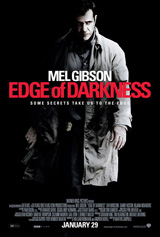The Onion: Rules Grammar Change
Tag Archives: grammar
Grammar: Pronouns Part XVI—Relative Antecedents
Like most pronouns, the relative pronouns who, which, and that have antecedents—nouns or pronouns to which they refer. Usually the antecedent to a relative pronoun appears in the main clause of the sentence. For clarity, the relative pronoun should immediately follow its antecedent:
Yesterday was Valentine’s Day, a holiday that popular belief claims is named after a third-century priest who was executed for performing illegal marriage ceremonies.
Subject-Verb Agreement
Relative pronouns that are the subjects of subordinate clauses take verbs that agree with their antecedents:
Some argue that Valentine’s Day is a holiday that was invented—or at least heavily marketed—by Hallmark.
Questions arise with sentences that include the phrases one of the and only one of the. Chicago prescribes treating one of the constructions as plural and only one of the constructions as singular:
Due to these marketing efforts, Valentine’s Day is one of the few holidays that are celebrated throughout the world.
It is the only one of the myriad holidays that is dedicated to romantic love.
Don’t try applying this guideline on the SAT, though where one is always just that: one—i.e., singular.
Omitted Antecedents
If there isn’t an antecedent, however, what can be used to mean that which:
Is that what you meant by sending me a Valentine’s Day card?
The Mots Justes Series on Pronouns
Part II—Location, Location, Location
Part V—Gender, Plus “They” as a Gender-Neutral Singular Pronoun
Part VII—Something Personal Between You and Me
Part X—Indefinitely (We, You, and They)
Resources
Chicago Manual of Style, The. 15th ed. Chicago: The University of Chicago Press, 2003.
Hacker, Diana, The Bedford Handbook for Writers, 3rd ed. Boston: St. Martin’s Press: 1991.
Filed under grammar
Grammar: Pronouns Part XV—Relative
Relative pronouns—who, whom, whose, which, that, and what—introduce a relative (or subordinate) clause and relates it to the rest of the sentence.
Who Vs. Whom
Who is in subjective case. It can be used when the relative pronoun serves as the subject of the subordinate clause:
Led by Brett Favre, who played quarterback at rival Green Bay for fifteen years, the Minnesota Vikings are one game away from the Super Bowl.
Whom is in objective case. It can also be used in two situations: as the object of a verb or the object of a preposition:
Brad Childress, whom the team hired four years ago, has finally coached the Vikings to the NFC Championship game.
Crucial to the Vikings win yesterday was Sidney Rice, to whom Favre threw three touchdown passes.
If you’re having a hard time figuring out whether the relative pronoun is in subjective or objective case, substitute he or him, rewriting the sentence as necessary:
Led by Brett Favre, the Minnesota Vikings are one game away from the Super Bowl. He played quarterback at rival Green Bay for years.
Brad Childress has finally coached the Vikings to the NFC Championship game. The team hired him four years ago.
Crucial to the Vikings win yesterday was Sidney Rice. Favre threw three touchdown passes to him.
If you would use he in the sentence, then use who. If you would use him in the sentence, use whom. Just remember that the m’s in him and whom go together.
Whose is in the possessive case and thus shows ownership:
Adrian Peterson, whose running game is a constant threat, had a relatively quiet game.
Who Vs. Which Vs. That Vs. What
Use who, whom, and whose only when referring to a person. They can be used in first, second, or third person. (See examples above.)
Use which only when referring to an animal or thing:
The team, which got skunked in its last division championship by the New York Giants in 2001, goes into New Orleans with a definitive win against Dallas.
Use what only when referring to a nonliving thing:
The drubbing was exactly what the Vikings needed going into next week’s game against the Saints.
Both which and what can be used in the second or third person, but not in the first.
Use that to refer to a person, animal, or thing. It can be used in the first, second, or third person:
In the locker room after the game, Favre sang the “Pants on the Ground” song that was made famous on American Idol.
For the difference between that and which, see this previous post on comma use with subordinate clauses.
Compound Relative Pronouns
Compound relative pronouns are formed by adding the suffice -ever to who, whom, what, or which. Whoever, whomever, whatever, and whichever don’t point back to a noun or pronoun but refer generally to any or all people or things:
Whomever the Vikings face in the rest of the playoffs will be formidable opponents.
Whatever happens next weekend, the Vikings had a fun and exciting season.
Do you have a question about pronouns? Let me know, and I’ll include it in a future installment of Mots Justes’ ongoing series.
The Mots Justes Series on Pronouns
Part II—Location, Location, Location
Part V—Gender, Plus “They” as a Gender-Neutral Singular Pronoun
Part VII—Something Personal Between You and Me
Part X—Indefinitely (We, You, and They)
Resources
Chicago Manual of Style, The. 15th ed. Chicago: The University of Chicago Press, 2003.
Hacker, Diana, The Bedford Handbook for Writers, 3rd ed. Boston: St. Martin’s Press: 1991.
Filed under grammar
Monday Morning Grammar: Pronouns Part XIV—Interrogative
Interrogative pronouns—who, whom, whose, which, and what—introduce questions.
Who Vs. Whom
Who is in subjective case. It can be used in two situations: as the subject of a verb or as the predicate nominative after a linking verb:
Who hosted a Halloween party this year?
It was who?
Whom is in objective case. It can also be used in two situations: as the object of a verb or preposition:
Whom did you invite to your Halloween party?
As whom did you dress for your costume?
If you’re having a hard time figuring out whether the interrogative pronoun is in subjective or objective case, substitute he or him, rewriting the sentence as necessary:
He hosted a Halloween party this year.
You invited him to your Halloween party.
If you would use he in the sentence, then use who. If you would use him in the sentence, use whom. Just remember that the m’s in him and whom go together.
Whose is in the possessive case and thus shows ownership:
Whose costume was best at the party?
Who Vs. Which
When working as interrogative pronouns, who and which can both refer to people, but their uses differ.
Who is general. Use it when anyone could be the answer:
Who wants to go trick-or-treating this year?
Who also asks about the identity of a specific person:
Who is that woman dressed as a witch?
Which is limited, asking for a member of a group:
Which Beatle are you supposed to be?
Which Vs. What
Either which or what can be used when referring to a person or thing:
Which one of you made your own costume?
What kind of candy did you hand out to trick-or-treaters this year?
When used in reference to a person, what asks a question about that person—what they’re like, what they do, etc.:
What do you think of the party’s host?
When used in reference to a thing, what is used broadly to ask for a thing, especially among a set:
What are you supposed to be?
What was the best costume of the night?
Do you have a question about pronouns? Let me know, and I’ll include it in a future installment of Mots Justes’ ongoing series.
The Mots Justes Series on Pronouns
Part II—Location, Location, Location
Part V—Gender, Plus “They” as a Gender-Neutral Singular Pronoun
Part VII—Something Personal Between You and Me
Part X—Indefinitely (We, You, and They)
Resources
Chicago Manual of Style, The. 15th ed. Chicago: The University of Chicago Press, 2003.
Hacker, Diana, The Bedford Handbook for Writers, 3rd ed. Boston: St. Martin’s Press: 1991.
Filed under grammar
Usage Thursday: Top Nine Misused Words
One of my oldest, dearest friends uses the word irregardless. She is smart and highly educated, yet insists on using this non-word. Should I correct her? Cracked.com says yes and lists eight other words that don’t mean what we think they do with advice on whether it’s worth insisting people use them the right way. Although the site’s presentation is crude, the explanations of how we’re using peruse, ironic, pristine, nonplussed, bemused, enormity, plethora, and deceptively incorrectly and what they really mean are clear and entertaining. Do you have any to add?
Filed under usage
Monday Morning Grammar: Pronouns Part XIII—Demonstrative
This, that, these, and those are demonstrative pronouns—or, if you want to get fancy about it, deictic pronouns—that identify or point directly to their antecedents.
This and that are used for singular antecedents:
This is my professional blog about “finding the right words.”
That is my personal blog about staycationing in Los Angeles.
These and those are used for plural antecedents:
These are posts about writing and editing.
Those are posts about getting out and being a tourist in my hometown.
In all of the examples given so far, the demonstrative pronoun has functioned like a noun equivalent in the sentence, but demonstrative pronouns often work as adjectives:
I have been posting to this blog for over a year.
I just started that blog last month.
This and these refer to things that are nearby, whether in time, space, or thought, while these and those refer to things that are farther away.
The antecedent for a demonstrative pronoun can be a noun, phrase, clause, sentence, or implied thought, as long as it’s clear.
Kinda Sorta
Kind of and sort of, when use to mean “a class of,” are often used with adjectival forms of demonstrative pronouns:
This kind of professional blog helps me learn more about my craft while connecting me with other writers and editors.
Those sorts of personal blogs provide structure to my free time while giving me another outlet for creative writing.
Do you have a question about pronouns? Let me know, and I’ll include it in a future installment of Mots Justes’ ongoing series.
The Mots Justes Series on Pronouns
Part II—Location, Location, Location
Part V—Gender, Plus “They” as a Gender-Neutral Singular Pronoun
Part VII—Something Personal Between You and Me
Part X—Indefinitely (We, You, and They)
Resources
Chicago Manual of Style, The. 15th ed. Chicago: The University of Chicago Press, 2003.
Hacker, Diana, The Bedford Handbook for Writers, 3rd ed. Boston: St. Martin’s Press: 1991.
Filed under grammar
Do You Have a G.O.D. Complex?
That is, do you suffer from Grammar Obsessive Disorder?
Filed under just for fun
Monday Morning Grammar: Pronouns Part XI—Indefinitely (It)
Monday Morning Grammar: Pronouns Part XI—Indefinitely (It)
It is SAT season, and one of the rules I emphasize with my students as they prepare for the test is that personal pronouns always need to have a clear antecedent. (Two exceptions, even on the SAT, are I and you, whose antecedents—the person speaking or writing and the person being spoken or written to—are implied.) However, in everyday language, it is often used as an indefinite pronoun.
The pronoun it can be used to refer to a phrase, clause, sentence, or idea that’s implied but not explicitly stated:
In yesterday’s Vikings game against the 49ers, Brett Favre threw a game-winning touchdown with just two seconds left on the clock. You have to see it to believe it.
In this example, you can infer that it refers to the play: You have to see the play to believe it.
It can be the subject of a sentence without having an antecedent. Usually the verb in such a sentence is a form of to be:
It was amazing.
It can also open a sentence and introduce a phrase or clause that comes after the verb:
It is strange to see Favre wearing purple after he played for so many years in Packers green.
And it can introduce a subject or object before it appears in a sentence:
I find it hard to get used to this new world order.
Finally, it can serve as a subject in a sentence discussing time or the weather:
It is autumn; it has finally cooled down.
However, although I’ve been known to favor starting sentences with It’s …—check out the first sentence of this post, for example—I wouldn’t recommend it in academic writing because your meaning can become muddled:
Everywhere I go, even at the Goodwill donation center, people want to talk about Favre. It is exciting.
What is exciting? Favre? Or that everyone wants to talk about him?
Friends of my family have a nephew who plays for the Packers. It is a good opportunity.
What is a good opportunity? Ostensibly, it’s the nephew’s position on the team, but the antecedent isn’t clear.
Do you have a question about pronouns? Let me know, and I’ll include it in a future installment of Mots Justes’ ongoing series.
The Mots Justes Series on Pronouns
Part II—Location, Location, Location
Part V—Gender, Plus “They” as a Gender-Neutral Singular Pronoun
Part VII—Something Personal Between You and Me
Part X—Indefinitely (We, You, and They)
Resource
Chicago Manual of Style, The. 15th ed. Chicago: The University of Chicago Press, 2003.
Filed under grammar
Monday Morning Grammar: Pronouns Part VIII—Infinitives
Quickie post today since it’s Labor Day!
When a pronoun is used with an infinitive—i.e., to plus a verb’s root or stem—use objective case. This rule holds true whether the pronoun is the object of the infinitive or the subject:
Jeff wanted me to accompany him to his stepbrother’s wedding this weekend.
The morning after the ceremony, Jeff’s mother asked us to help tear down the wedding decorations and clean up the reception venue.
Do you have a question about pronouns? Let me know, and I’ll include it in a future installment of Mots Justes’ ongoing series.
The Mots Justes Series on Pronouns
Part II—Location, Location, Location
Part V—Gender, Plus “They” as a Gender-Neutral Singular Pronoun
Part VII—Something Personal Between You and Me
Resources
Chicago Manual of Style, The. 15th ed. Chicago: The University of Chicago Press, 2003.
Filed under grammar
Usage Thursday: E.G. and I.E.
The abbreviated Latin terms e.g. and i.e. are often confused and used incorrectly. E.g. stands for exempli gratia, which means “for example.” I.e. stands for id est, which means “that is” or, put another way, “in other words.” The two abbreviations have distinct meanings and should not be used interchangeably:
Jeff and I are traveling to Minnesota to visit some of our old stomping grounds—e.g., our old apartment and the movie theater where we worked.
Because e.g. means “for example,” the apartment and the movie theater are just examples of some of the places we visited; we visited other places as well.
Jeff and I are traveling to Minnesota to visit some of our old stomping grounds—i.e., our old apartment and the movie theater where we worked.
Here, because i.e. means “that is,” the apartment and the movie theater are the only places we visited; mentioning them provides further explanation.
To borrow a “quick and dirty tip” from Grammar Girl, you can remember the difference between e.g. and i.e. by associating the abbreviations with their English meanings:
e.g. →for example
i.e. →that is, in other words
Although I’ve used italics in my discussion here for clarification, don’t italicize e.g. and i.e. in your writing. Yes, they are abbreviations for words in a foreign language, which usually are italicized, but they’ve become so standard in English that they no longer need to be. Do, however, put a period after each letter—they are abbreviations, after all—and always follow e.g. and i.e. with a comma.
Resources
Chicago Manual of Style, The. 15th ed. Chicago: The University of Chicago Press, 2003.
Fogarty, Mignon, Grammar Girl’s Quick and Dirty Tips for Better Writing. New York: Holt Paperbacks, 2008.
Filed under usage







